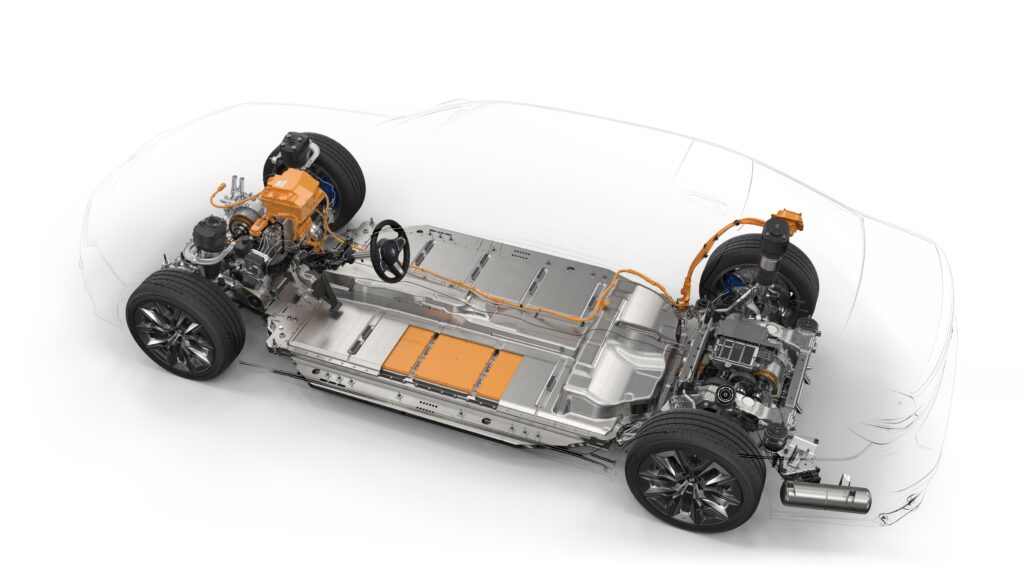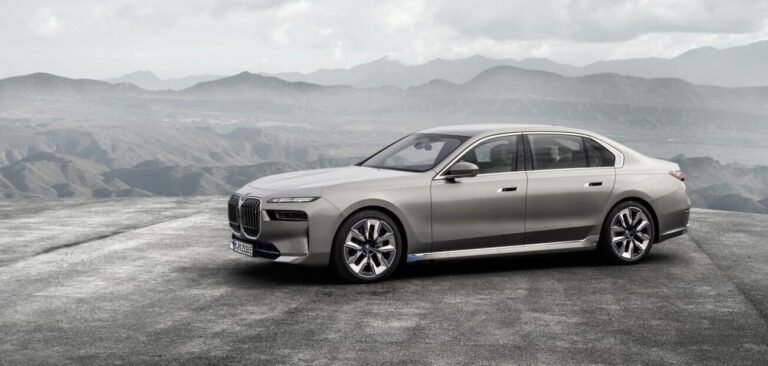BMW’s latest generation of 7 Series has been unveiled, with the range gaining an all-electric variant for the first time, the i7. This harnesses BMW’s fifth-generation eDrive technology consisting of integrated drive units at the front and rear axles in addition to the accompanying charging and high-voltage battery systems.
Compared to current applications of the latest e-drive, BMW states that control of the system’s adaptive recuperation function has been further refined in the BMW i7 to increase range. Compared with the BMW iX and BMW i4 models, the charging software has also undergone further improvement, meaning the temperature of the high-voltage battery is controlled more precisely and there is also an innovative facility for saving charging profiles.
The drive units do not use any rare earth magnets, instead relying on a pair of electrically excited synchronous motors. The motor driving the rear wheels generates peak output of 233kW, while the unit at the front axle produces 192kW, giving a combined maximum output of 425kW and torque of 745Nm.
BMW says it has gone to great lengths to reduce the height of the floor-mounted battery pack, which is just 110mm tall, and provides 101.7 kWh of usable energy. Heat pump technology used in the integrated heating and cooling system for the cabin and drive system also helps boost efficiency, as does the adaptive or individually adjustable recuperation feature. The high-voltage battery is heated using a dedicated 5.5kW electric flow heater.
Refinement of the adaptive recuperation feature means it is now also able to take downhill sections and information from the traffic-light recognition function into account. Adaptive recuperation generally allows the intensity of brake energy regeneration during overrun and braking to be automatically optimized for the road situation, as detected using data from the navigation system and the driver assistance systems’ sensors.
When approaching a junction, for example, the level of recuperation can be increased – even if route guidance isn’t activated – thereby feeding energy back into the high-voltage battery while harnessing the deceleration effect at the same time. On the open road, meanwhile, the coasting function can take over, enabling the car to “freewheel” with no drive power whenever the driver eases off the accelerator. Energy is no longer supplied to the two electric motors in this state, meaning no battery power is consumed.
The charging control algorithms have also come in for attention compared to BMW’s other EV models. Now, once the high-voltage battery reaches a higher charge level, the new charging process aims to ensure the charging rate drops smoothly instead of following the previous “stepped” curve. This produces a more rounded charging curve overall, resulting in shorter charging times. Following an initial, temperature-dependent phase of constant power supply, the new process now also controls charging based on a continuous nominal voltage curve that allows for the variables of temperature, recharged capacity and charge level at start of charging.
Furthermore, alternating phases of full and partial cooling power are used during fast charging to avoid excessive cooling of the battery. This prevents cell temperatures from dropping too low in the process, particularly at higher charge levels, thereby opening up potential for short charging times and reduced aging of the high-voltage battery’s cells.



